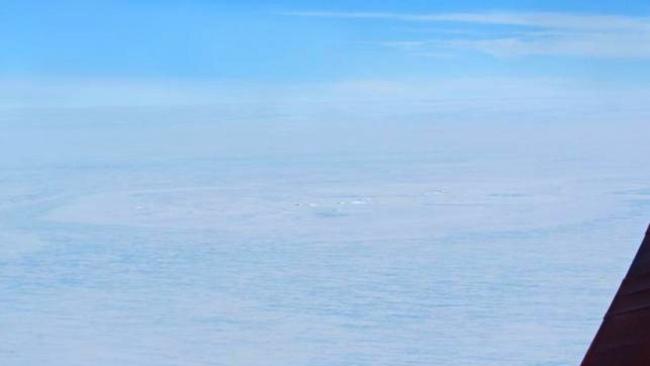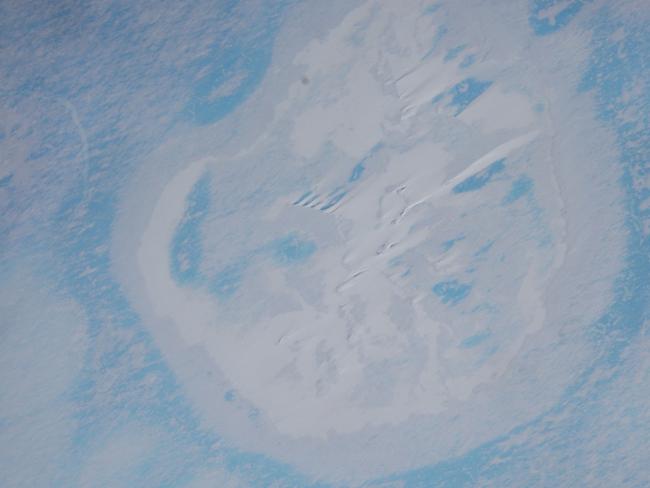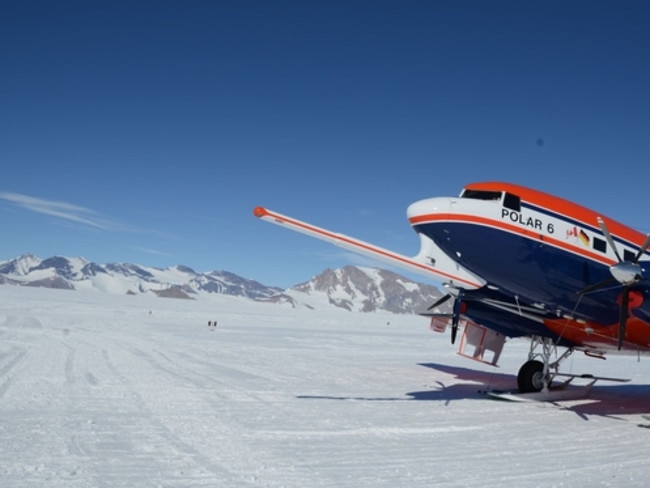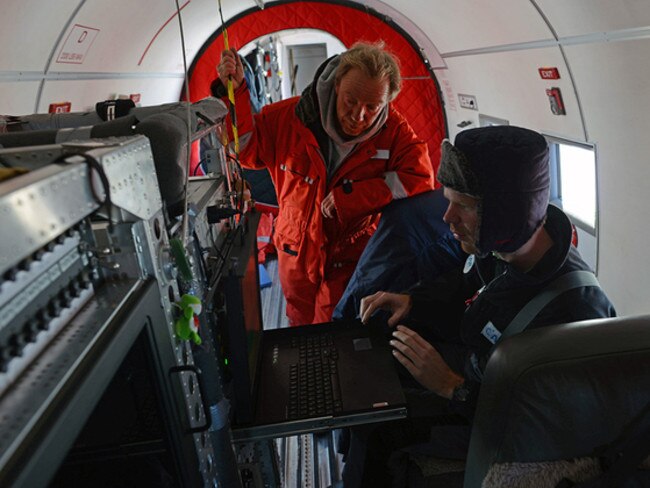Mystery of Antarctic ice ring raises debate over meteor origins
THERE’S a strange circle in the middle of Antarctica’s ice sheet. Was it created by a house-sized meteorite hit a decade ago? Facebook seems determined to find out.
THERE’S a massive, mysterious circle in the middle of Antarctica’s ice sheet. Was it created by a house-sized meteorite hit a decade ago?
The discovery of the 3km-wide ring was announced earlier this year by an Alfred Wegener Institute (AWI) survey team.
Since then, debate has flared in science communities over what exactly caused the strange ice structure: Was it a meteor, a ‘sink hole’ — or something else entirely?
It’s a mystery that has come under immediate and intense scientific scrutiny.
On Facebook.

DEEP IMPACT?
Geophysicist Christian Mueller spotted the formation when looking out the window of his aircraft while surveying Antarctica’s Princess Ragnhild Coast.
The German researchers were surveying the region to gather new details on the Gondwana supercontinent of between 550 million and 180 million years ago.
“I looked out of the window, and I saw an unusual structure on the surface of the ice,” Mueller states in a video released by his institute.
“There was some broken ice looking like icebergs, which is very unusual on a normally flat ice shelf, surrounded by a large, wing-shaped, circular structure.”
He had found what appeared to be an impact crater.
RELATED: What are the mysterious craters being blasted into Siberia’s permafrost?
Scrabbling back through old research publications, Mueller says he found mention of a 2004 explosion detected by infrasound monitoring sites set up around the world to detect nuclear explosions.
A triangulation of that data postulated a meteor had crashed into that area of the Antarctic.
The account reportedly corroborated with Australian researchers at Davis Station sighting a dust trail in the upper atmosphere.
It’s not a certain thing, though.
Another expedition is being assembled to study the formation and its potential causes later this year.

CRACKS IN THE ICE
One analysis states a meteor is usually about 5 to 10 per cent the size of the impact crater it leaves behind.
In this case, it would have had to be 100m across.
While a significant figure, it raises doubts as to the meteor origins of the ice formation.
An impact of that size would have registered much stronger on infrasound monitoring equipment, LiveScience reports.
Instead, the data gathered by the monitoring stations suggests the meteorite they detected was likely some 10m across.
All of the above, however, is subject to the uncertain behaviour of the ice sheet under the hammer-blow of such an impact.

ALTERNATE VIEW
The AWI Ice Blog has recently been updated with a new entry from the University of Chicago.
Glaciologist Doug MacAyeal suggesting the ring could be a sign of a massive ice doline — round sinkholes caused by a pool of melt water.
The ice above a cave melted into the base of a glacier eventually collapses, and then refreezes, leaving the ‘sinkhole’ effect on the surface.
It’s an effect sometimes seen in Greenland.
In other words, exactly the kind of impact Mueller and his team was originally looking for.
“If the melt water drains suddenly, like it often does, the surface of the glacier is destabilised and does collapse, forming a round crater,” MacAyeal wrote in the blog.
It’s an opinion apparently supported by analysis of old satellite photograph of the Antarctic. Indications are the circle can be traced back some 25 years — long before the reported meteor impact.
But even this idea has its critics.
“If the doline hypothesis proves true, new research questions have to be considered,” said AWI glaciologist and science blogger Dr. Olaf Eisen writes on the institute’s blog.
“To form an ice doline this size, it would need a considerable reservoir of melt water. Therefore we would need to ask, where did all this melt water come from? Which melting processes have caused such an amount of water and how does the melting fit into the climate pattern of East Antarctica?”
Science, after all, is the survival of the fittest theory.

PEER REVIEW — ON STEROIDS
The rapid, intense scrutiny of the German team’s observations have startled the institute involved in its discovery.
Glaciologists from around the world appear to have all converged on Facebook to express their views.
“It took us by surprise, that this glaciological research meeting happened entirely on Facebook,” Dr Eisen writes.
“For the WEGAS team, however, our experience of the last few days has shown that modern scientific discussion is not confined to the ivory towers of learned meetings, technical papers, and lecture halls, but that the public and social media play a tremendous role.
“For us, cut off from the modern world among the eternal ice, this new science seems to have happened at an almost breathtaking pace.”




